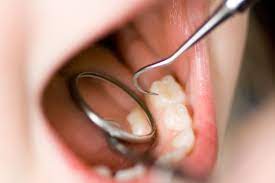If you've been wondering, do you need a tooth filling?—it's likely because you've noticed some discomfort, sensitivity, or perhaps even a visible cavity in your tooth. Dental fillings are one of the most common dental treatments and can help restore a tooth that has been damaged by decay, cracks, or wear. Knowing the signs of when a filling is necessary and understanding the process can help you make informed decisions about your dental health. In this guide, we'll walk you through the signs that indicate you may need a Dental Tooth Filling and what to expect during the treatment.
Common Signs You May Need a Tooth Filling:
Certain symptoms or dental issues may indicate that a filling is required to prevent further damage or pain. These signs can vary depending on the severity of the issue, but some of the most common indicators include:
- Tooth sensitivity – Pain when consuming hot, cold, or sweet foods
- Visible holes or dark spots – Signs of decay or cavities
- Pain while chewing – Discomfort when biting down on food
- Cracked or chipped teeth – Weak spots that need reinforcing
- Lingering bad breath – Caused by trapped food or bacteria in cavities
If you notice any of these symptoms, it's a good idea to visit your dentist to assess the situation and determine whether a filling is needed.
Why Are Fillings Important for Your Oral Health?
Tooth fillings not only restore the look and function of a damaged tooth but also play a crucial role in maintaining your overall oral health. Here’s why they’re important:
- Prevents further decay – A filling helps seal off the cavity to prevent bacteria from spreading
- Restores tooth function – You’ll be able to chew and bite without pain or difficulty
- Protects against infection – By filling the cavity, the risk of infection is reduced
- Preserves natural teeth – Filling a cavity helps avoid tooth extraction or more extensive procedures
- Improves appearance – Modern fillings can blend with the natural color of your teeth
By taking care of a decayed tooth with a filling, you prevent the problem from worsening and help maintain the integrity of your smile.
Types of Fillings Available:
When it comes to tooth fillings, there are several options available, depending on your needs, budget, and the location of the cavity. The most common types of fillings include:
- Amalgam fillings – Made from a mixture of metals (silver-colored), they are durable and cost-effective but noticeable
- Composite fillings – Tooth-colored and more aesthetically pleasing, these are ideal for visible areas
- Ceramic fillings – Made of porcelain, they are durable and blend well with natural teeth but tend to be more expensive
- Gold fillings – Highly durable and resistant to wear but more costly and require multiple visits
- Resilon – A biocompatible filling material used primarily for root canal procedures
Your dentist will help determine which type is best suited for your dental issue, taking into account factors like location, durability, and appearance.
The Process of Getting a Tooth Filling:
The procedure for getting a Dental Tooth Filling Treatment is generally simple and can often be completed in just one visit. Here’s what to expect:
- Consultation: The dentist examines the affected tooth and may take an X-ray to assess the extent of the damage
- Numbing: A local anesthetic is applied to numb the area around the tooth to ensure you remain comfortable
- Cavity removal: The decayed portion of the tooth is carefully removed with a dental drill or laser
- Filling placement: The chosen filling material is inserted into the cavity, shaped to match the tooth, and hardened with a special light
- Final adjustments: The dentist checks your bite to make sure everything feels natural, making any necessary tweaks
The procedure is quick, with most people able to resume normal activities shortly after the treatment.
Aftercare and Maintenance for Dental Fillings:
Once you’ve had a filling placed, it’s important to follow proper aftercare to ensure the longevity of the filling and the health of your tooth. Consider these tips:
- Avoid chewing hard foods for the first 24 hours to allow the filling to set properly
- Maintain a good oral hygiene routine – Brush and floss regularly to keep the area clean and prevent plaque buildup around the filling
- Be mindful of sensitivity – If you experience sensitivity to temperature or pressure, let your dentist know, as it may require an adjustment
- Visit your dentist regularly for check-ups and cleanings to monitor the condition of the filling
With good care, dental fillings can last for several years, helping to preserve the health of your tooth.





Comments